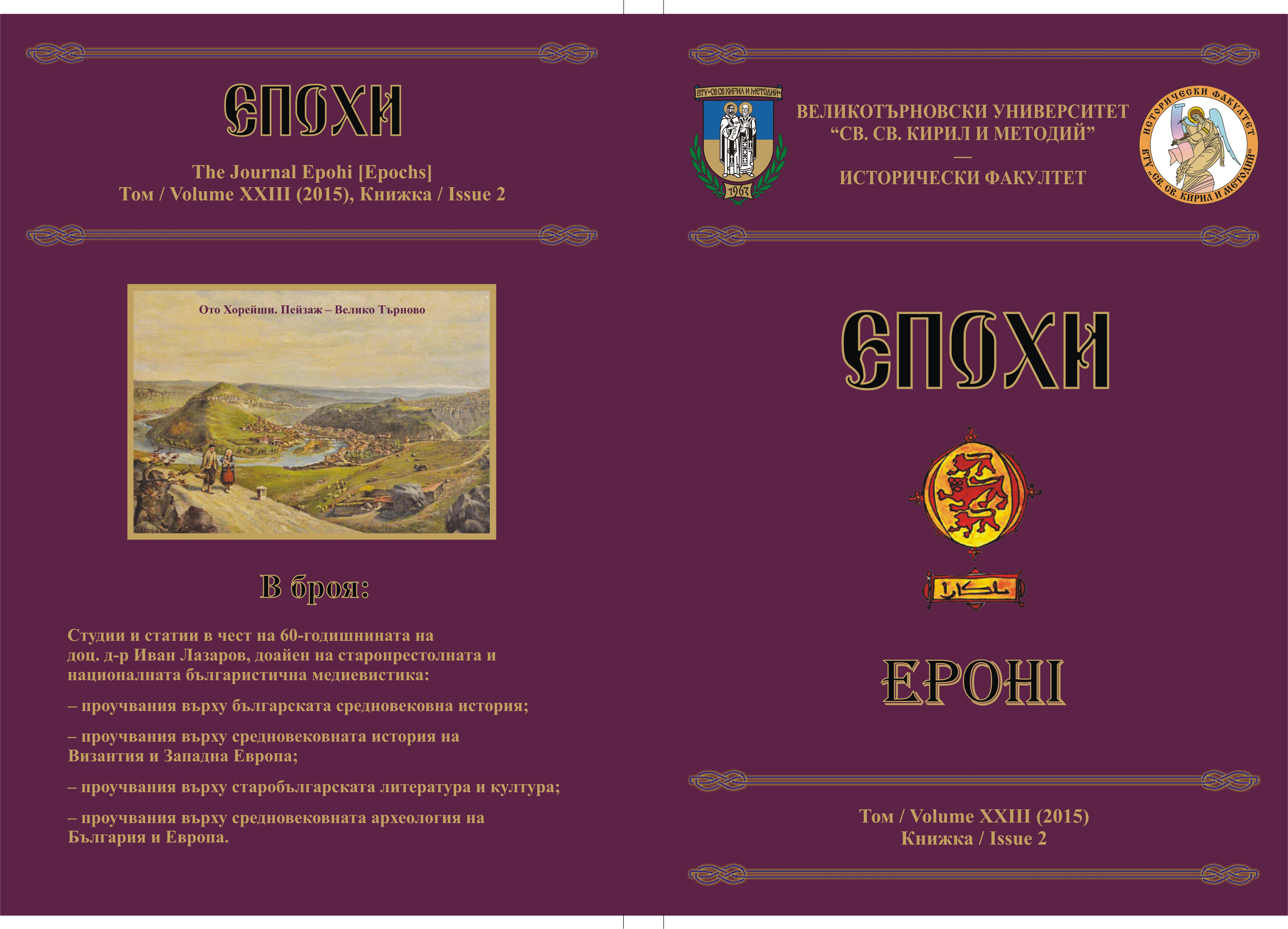Византийските свещени войни: проблеми и дискусии
Holy wars of Byzantium: problems and discussions
Author(s): Iliyan MihovSubject(s): Christian Theology and Religion, History, Cultural history, Diplomatic history, History of ideas, Social history, Middle Ages, Theology and Religion, 6th to 12th Centuries, 13th to 14th Centuries, History of Religion
Published by: Великотърновски университет „Св. св. Кирил и Методий”
Keywords: Holy wars;Byzantine Empire;Sasanian Empire;John I Tzimiskes;Nicephorus II Phocas
Summary/Abstract: The article discusses various aspects of Byzantine Empire’s history in the 6th – 7th c., called by some historiographers the “Holy Wars of Early Byzantium”. In the 6th c. the Byzantines built up the most enduring medieval doctrine – the doctrine of the Holy Empire: it is the idea of the Sacred Byzantine Empire understood as a union of State and Church. An important aspect in the Medieval worldview is the unity of religion and politics. The idea of the inextricable link between the Byzantine Empire and the Christian faith turns on the traditional ancient view of the world, which is divided into Roman and barbarian and now began to be divided into Christian and non-Christian. Between the 3rd and 7th c., Byzantium’s main rival in public attitude is the Sasanian Empire. The culmination of these relations are the so-called Heraclius’ Wars with the Sasanian Empire and the restoration of the True Cross to Jerusalem. The emergence of a new religious-political doctrine – the Islam and Byzantium’s attitude to the new historical realities during Nicephorus II Phocas (963 – 969) and John I Tzimiskes (969 – 976) are also discussed. In parallel, the Crusades occurred in Western Europe that creates a new dimension to the concept of Holy War, which even today builds up the image of the so-called Holy wars.
Journal: Епохи
- Issue Year: XXIII/2015
- Issue No: 2
- Page Range: 448-458
- Page Count: 11
- Language: Bulgarian

